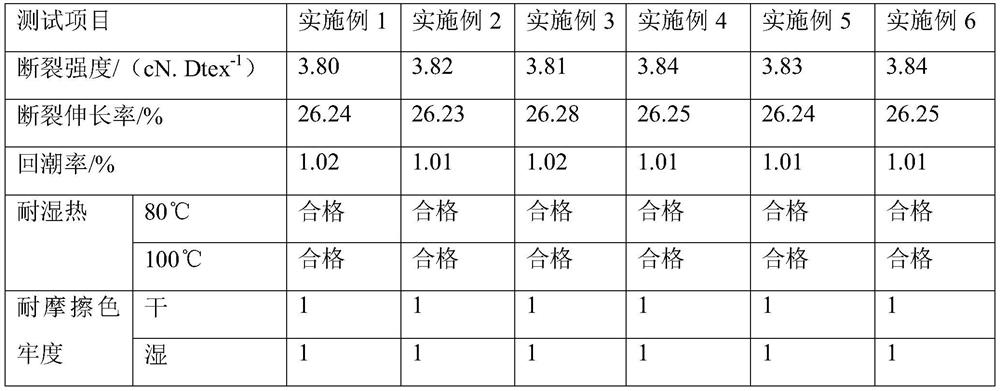Production process of all-cotton flannel printed fabric
A cotton flannel and production process technology, applied in dyeing, weaving, fabrics, etc., can solve problems such as fading in water, easy carcinogenic dye molecular structure, hardened product hand feeling, etc.
- Summary
- Abstract
- Description
- Claims
- Application Information
AI Technical Summary
Problems solved by technology
Method used
Image
Examples
Embodiment 1
[0029] A production process of cotton flannel printed fabric, comprising the steps of:
[0030] Step 1, the whole cotton 21s yarn and the carded wool yarn are subjected to acid fixing, color fixing and drying respectively to obtain the pretreated whole cotton 21s yarn and the pretreated carded wool yarn for use;
[0031] Step 2, select the pretreated cotton 21s as the warp yarn, the pretreated carded wool yarn as the weft yarn, and weave through the two-up and two-down left twill weaving method to obtain the fabric after weaving for use;
[0032] Step 3. Put the woven fabric into the printing paste for printing treatment. The temperature of the printing paste is 30°C, and the printing speed is 10m / min. Then, it is dried and steamed to fix the color. The temperature is 150°C, and the time is 12 minutes, and the printed semi-finished fabric is ready for use;
[0033] Step 4: Washing, dehydrating and drying the printed semi-finished fabric in sequence to obtain a cotton flannel ...
Embodiment 2
[0042] A production process of cotton flannel printed fabric, comprising the steps of:
[0043] Step 1, the whole cotton 21s yarn and the carded wool yarn are subjected to acid fixing, color fixing and drying respectively to obtain the pretreated whole cotton 21s yarn and the pretreated carded wool yarn for use;
[0044] Step 2, select the pretreated cotton 21s as the warp yarn, the pretreated carded wool yarn as the weft yarn, and weave through the two-up and two-down left twill weaving method to obtain the fabric after weaving for use;
[0045] Step 3: Put the woven fabric into the printing paste for printing treatment. The temperature of the printing paste is 40°C and the printing speed is 15m / min. The temperature is 170°C, and the time is 8 minutes, and the printed semi-finished fabric is ready for use;
[0046] Step 4: Washing, dehydrating and drying the printed semi-finished fabric in sequence to obtain a cotton flannel printed fabric.
[0047] Specifically, the acid-f...
Embodiment 3
[0055] A production process of cotton flannel printed fabric, comprising the steps of:
[0056] Step 1, the whole cotton 21s yarn and the carded wool yarn are subjected to acid fixing, color fixing and drying respectively to obtain the pretreated whole cotton 21s yarn and the pretreated carded wool yarn for use;
[0057] Step 2, select the pretreated cotton 21s as the warp yarn, the pretreated carded wool yarn as the weft yarn, and weave through the two-up and two-down left twill weaving method to obtain the fabric after weaving for use;
[0058] Step 3, put the woven fabric into the printing paste for printing treatment, the temperature of the printing paste is 35°C, and the printing speed is 12m / min, then dry, steam and fix the color. at 160°C for 10 minutes to obtain the printed semi-finished fabric for use;
[0059] Step 4: Washing, dehydrating and drying the printed semi-finished fabric in sequence to obtain a cotton flannel printed fabric.
[0060] Specifically, the ac...
PUM
 Login to View More
Login to View More Abstract
Description
Claims
Application Information
 Login to View More
Login to View More - R&D
- Intellectual Property
- Life Sciences
- Materials
- Tech Scout
- Unparalleled Data Quality
- Higher Quality Content
- 60% Fewer Hallucinations
Browse by: Latest US Patents, China's latest patents, Technical Efficacy Thesaurus, Application Domain, Technology Topic, Popular Technical Reports.
© 2025 PatSnap. All rights reserved.Legal|Privacy policy|Modern Slavery Act Transparency Statement|Sitemap|About US| Contact US: help@patsnap.com

